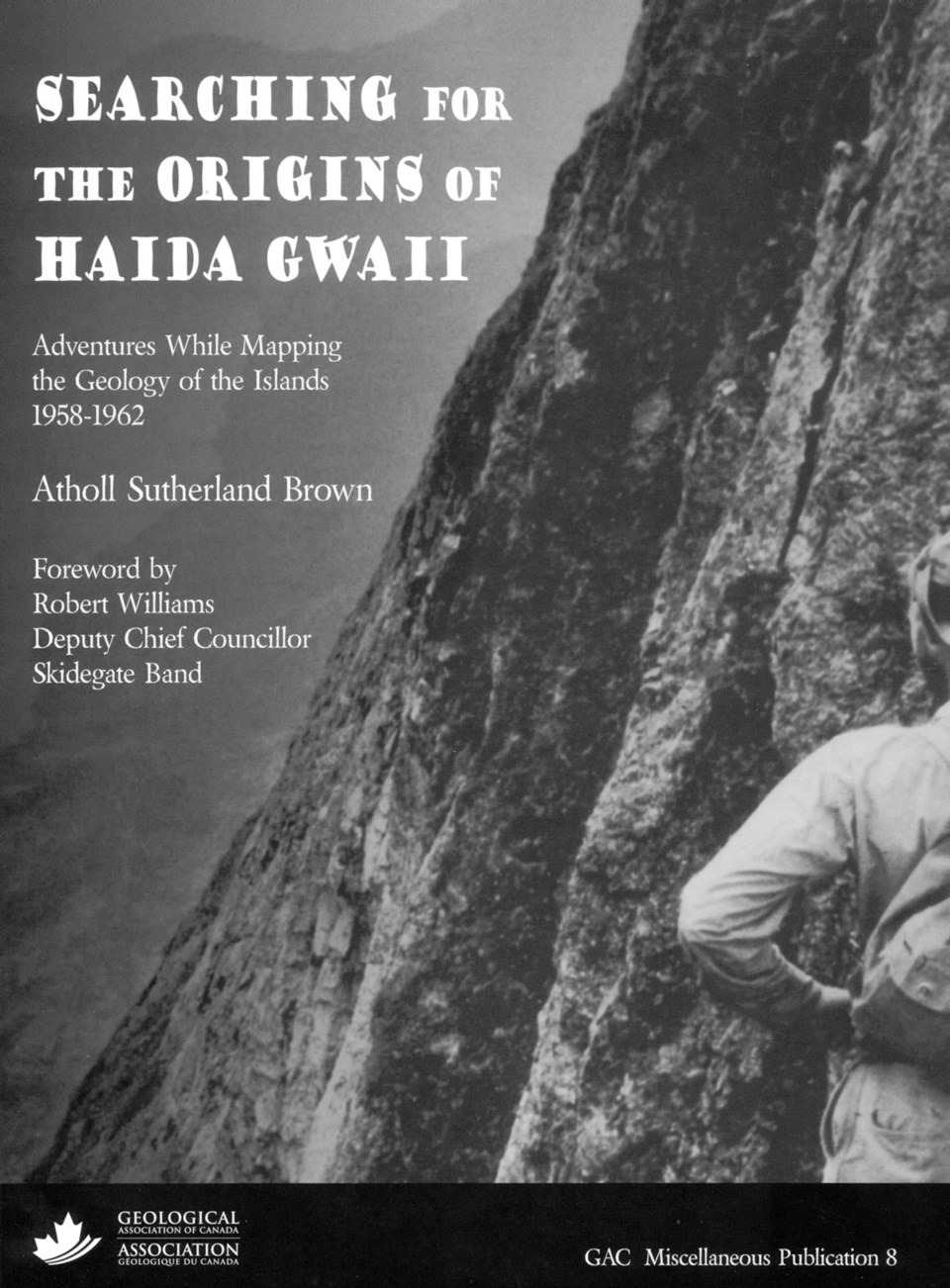Searching for the Origins of Haida Gwaii: Adventures While Mapping the Geology of the Islands, 1958-1962
by Atholl Sutherland Brown
Geological Association of Canada, St. John’s, N.L. $40.
After a trip to B.C.’s Interior, I got an urge to understand the basic geology of our province. Realizing that my friend, Atholl Sutherland Brown, had been head of the B.C. Geological Survey, I dropped by for a visit. Sutherland Brown answered my questions and lent me some wonderful books, among them the manuscript of his experiences surveying the geology of Haida Gwaii. That book has now been published.
In the early 1950s, Sutherland Brown was a doctoral student at Princeton University. His professor, Harry Hess, was at the time revealing his revolutionary theory of plate tectonics, the mechanism that powers continental drift. This concept has created a new understanding of how geology works. At the time, Hess suggested to Sutherland Brown that, since he was from British Columbia, he should apply himself to the as-yet-undescribed geology of Haida Gwaii.
Though neither as young nor as isolated as the Galapagos Islands, Haida Gwaii has a continuous history of more than 230 million years. It’s on the leading edge of the North American continent, and its interface with the Pacific Plate — the largest plate in the world — is unusual, for it has no shelf on the seaward side.
There, the great Queen Charlotte Fault immediately drops to abyssal depths of 3,000 metres, and the shore next to it rises abruptly to alpine heights of 1,200 metres. Here, in 1949, the Queen Charlotte earthquake registered 8.1 on the Richter scale, the strongest ever recorded in Canada. This is a landform eminently worth study.
The first two years of Sutherland Brown’s survey — 1958 and 1959 — were conducted from a small ship, the base for a great deal of walking along the shore and hiking the high mountain ridge lines. In the following three years, a tiny helicopter took the geologists to inaccessible mountain peaks, and their Land Rover and inflatable boat made closer inspection possible. These were new technologies and, with improved aerial photography, they made this field work possible.
Geology is a foreign language, described in a vocabulary entirely new to me — and essentially incomprehensible.
Here’s a taste: “Beyond the station, float occurred consisting of hornblende quartz-diorite and lesser igneous breccia and fine mafic gneiss (metabasalt).” Balancing his need to accurately describe the geology and to tell an engaging story, the author is careful to isolate these geological clusters. You can easily skip past the more obscure sections.
His field notes are fascinating from many points of view. The ways of the Haida, the attempts by the early geologists and the mining endeavours in the 19th century are all noted.
Sutherland Brown’s descriptions of the sea and landscape (accompanied by dozens of his photographs made during the surveys) are enticing. And the brief character sketches of the people he met are part of this unique travelogue. This book is not “dumbed down” for the general reader, but for the curious mind it introduces subjects of considerable interest.
Throughout, the author’s intelligence, opinions and wry humour leaven a book that, by its nature, could be very dry. You couldn’t have a better guide than Atholl Sutherland Brown.
Searching for the Origins of Haida Gwai is available from the publisher or it may be ordered from your local bookstore.



